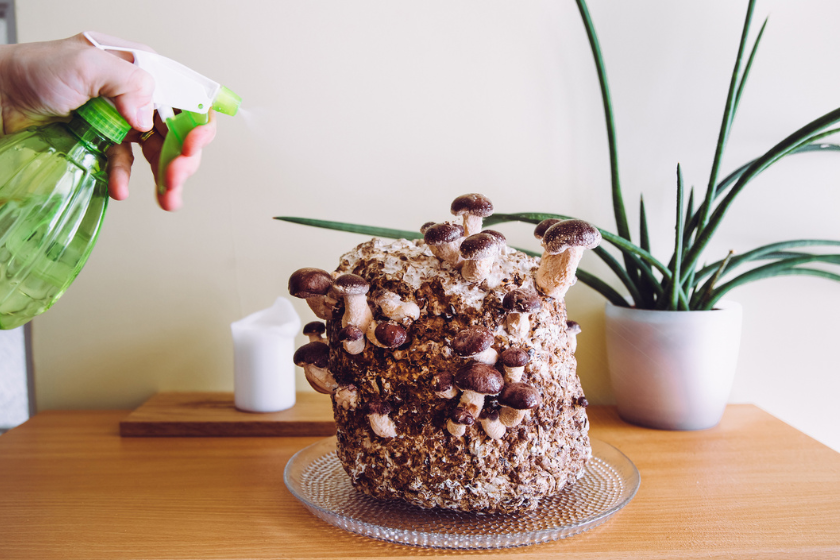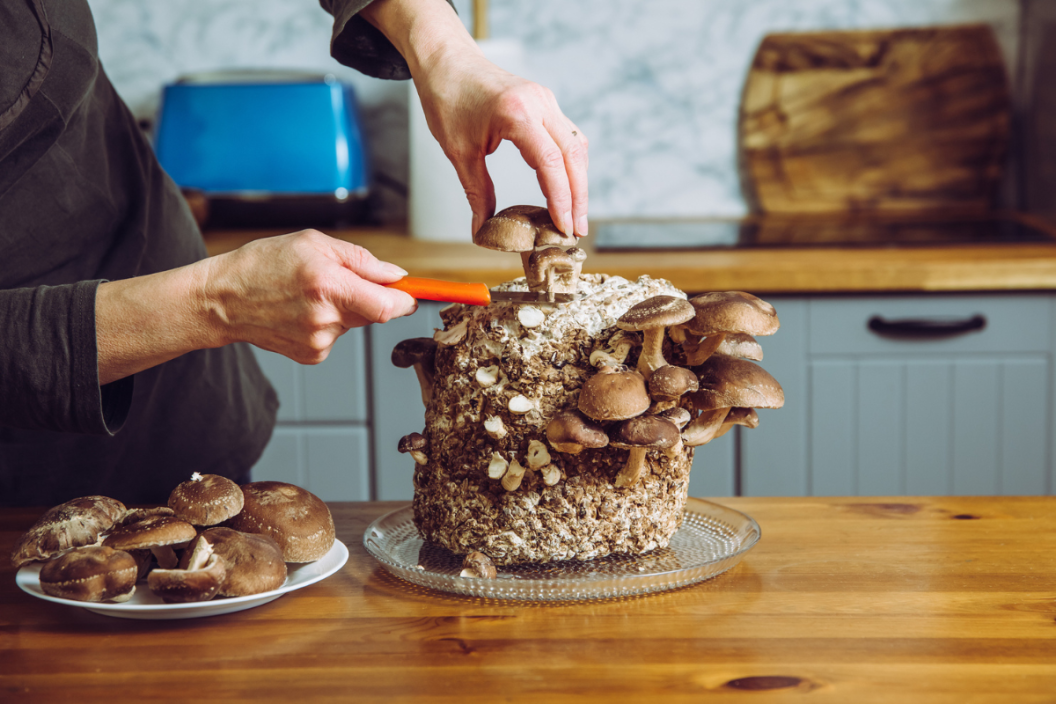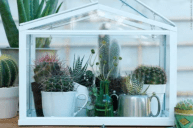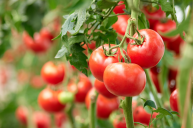Growing your own mushrooms at home is surprisingly easy. Last fall I developed an undying love for Lion's Mane mushrooms and wanted them all the time. They tend to be rare in grocery stores and difficult to find in the forest. One day, I found a kit at the farmers market from Black Trumpet Farm, a local mushroom farm based here in Asheville. Not only was it easy to grow, but they were just as delicious, cheaper, and even fresher than from the store!
Growing mushrooms at home is one of the many projects one can do to get closer to the land. While there are many ways to grow mushrooms (such as using mushroom logs), I find that mushroom kits are very accessible for first timers. Gwen, one half of Black Trumpet Farm, shares that oyster mushrooms tend to be the easiest to grow for first timers. "They can outcompete most other fungi and tolerate a wide variety of growing conditions," she says.
The process with mushroom kits is simple. First, lay the bag on its side and cut an X in the top. Mushrooms need lots of humidity to fruit (it's why mold is most susceptible in showers or tubs!). I keep orchids, so the area of the house where I placed the mushrooms is already pretty moist because of my humidifier running constantly.
Humidity, temperature, and air flow are key according to Gwen, "Most varieties fruit best under 65 degrees F. However, indoor air conditioners tend to dry out the air and mushrooms enjoy about 85% relative humidity. Keeping up with your daily misting program or building a DIY humidity structure can help keep the mushrooms from drying out."

iStock/Getty Images
Air flow is also as important as the humidity of a room. "They take up oxygen and produce carbon dioxide as they grow; they are more like animals than plants in this way. If carbon dioxide builds up in your DIY humidity structure, the mushrooms will stretch to reach the fresh air and will become leggy and misshapen," Gwen states, "Make sure you have holes, fans, or another method of fresh air exchange in your setup."
Spray the mushroom kit twice a day when dry, and within a week or so, you should start to see tiny mushrooms forming! In about two weeks when they have fully grown, cut them near the base. After another week, you might have a second fruiting. In my experience, the second fruiting isn't as large as the first but the mushrooms are still delicious.
Once the kit is completely done fruiting, you can cut the bag open and bury it in the dirt in the garden. Mine never sprouted again. I don't think I chose the best location and would try somewhere more shady next time.
Gwen shared that grow-kits don't necessarily serve the same purpose as spawn but can be put outside and buried under some leaves, straw, and mulching materials and they will likely keep fruiting. "They can also be used in your garden as mulch to suppress weeds, and they are great soil builders— mycelium releases compounds that attract earthworms and other soil microfauna."
You can purchase kits from your local farmers market, or online.
Best Mushroom Kit for Beginners
North Spore Lion's Mane Mushroom Spray & Grow Kit - Amazon, $34.99
Each kit should produce about 1.5 pounds of mushrooms, perfect to serve on pasta, pizza, or in this delicious roasted mushroom recipe. There's nothing quite like fresh mushrooms from home, and it's surprisingly easy to grow them! Give it a try and see how easy it is to have fresh mushrooms right at home.






